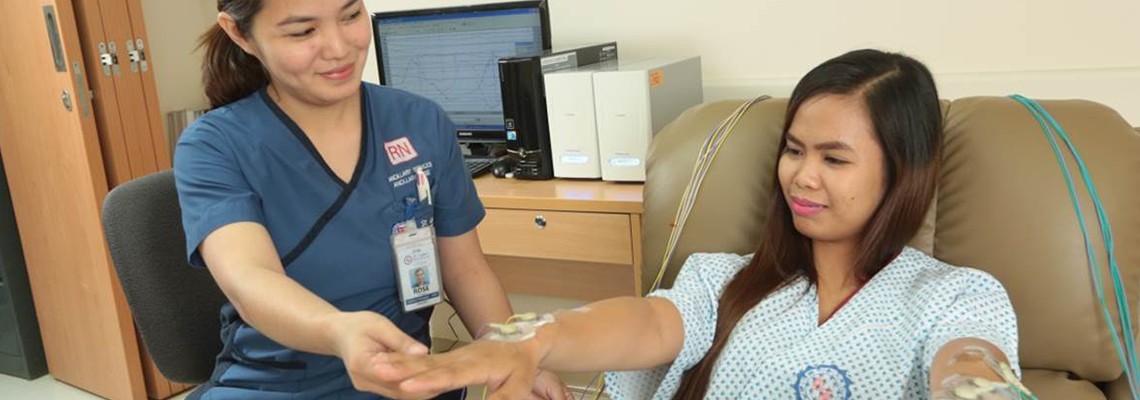
Movement Disorders Service
St. Luke’s Movement Disorders Service is a multidisciplinary center that specializes in diagnosing and treating movement disorders in adults and children, and aims to help patients and their families lead productive and normal lives with therapy and medication. Movement disorders, an important subspecialty of neurology, consists of conditions causing inadequate or excessive motor activity. Examples of movement disorders include Parkinson’s Disease, Essential Tremor, dystonia, myoclonus, ataxia, tics and chorea.
Services and Facilities:
-
Diagnosis and treatment of movement disorders
-
Neuroscan: Surface Electromyography (SEMG)
The St Luke’s Movement Disorders Service offers a painless, cutting-edge alternative in assessing movement disorders—the Neuroscan. The Neuroscan is a machine that utilizes surface electromyography (SEMG) technique to characterize muscle activity using surface electrodes placed on the skin overlying muscle. It allows evaluation of multiple muscles simultaneously and without pain. St Luke’s is the first medical center to make this new technology available in the Philippines.
Neurophysiologic SEMG data collected by the Neuroscan can help diagnose movement disorders. Many tremor disorders are characterized by distinct muscle activity patterns. The SEMG data collected is used to classify the tremor based on its frequency, amplitude of muscle activity and its presence at rest, with posture or with activity.
Other potentially important clinical applications of SEMG include differentiating tremor from myoclonus, spasmodic torticollis from other head tremors, and primary writing tremor from writer’s cramp, as well as identifying propriospinal myoclonus and psychogenic movement disorders.
A Neuroscan examination normally takes about 1 to 1 ½ hours. It starts with a clinical assessment of the patient by the movement disorders specialist who then decides which appropriate muscles to record. Usually, surface electrodes are pasted on the skin overlying pairs of antagonistic muscle, i.e. muscles that work opposite each other like wrist flexors and extensors. Neurophysiologic data are then recorded at rest, with posture, and with action. Standard activity such as writing or drawing spirals is augmented by specific activity that a patient, by experience, knows will activate an involuntary movement.
Botulinum Toxin A injections
The Movement Disorders Service offers botulinum toxin A injections for involuntary twitching of the eyes (Blepharospasm) or one side of the face (Hemifacial Spasms), and for relief of various painful conditions. EMG (Electromyography) guided injection of botulinum toxin A for various forms of focal dystonia and spasticity resulting from strokes, cerebral palsy, traumatic brain injury and other causes are also performed. It is important to identify the specific muscle to be injected in these situations. EMG guidance helps ensure that the botulinum toxin A is delivered to the appropriate muscles.
Comprehensive Parkinson’s Disease Profile
Frequently, patients with moderately advanced Parkinson’s disease complain of difficulty adjusting their medications. These patients can be admitted during office hours for a procedure called Parkinson’s Disease Profile. The Parkinson’s Disease Profile enables the Movement Disorders Service personnel to closely observe the patient’s response to various combinations of anti–Parkinson’s medication. By the end of the day, the patient can be sent home with a personalized medication schedule.
